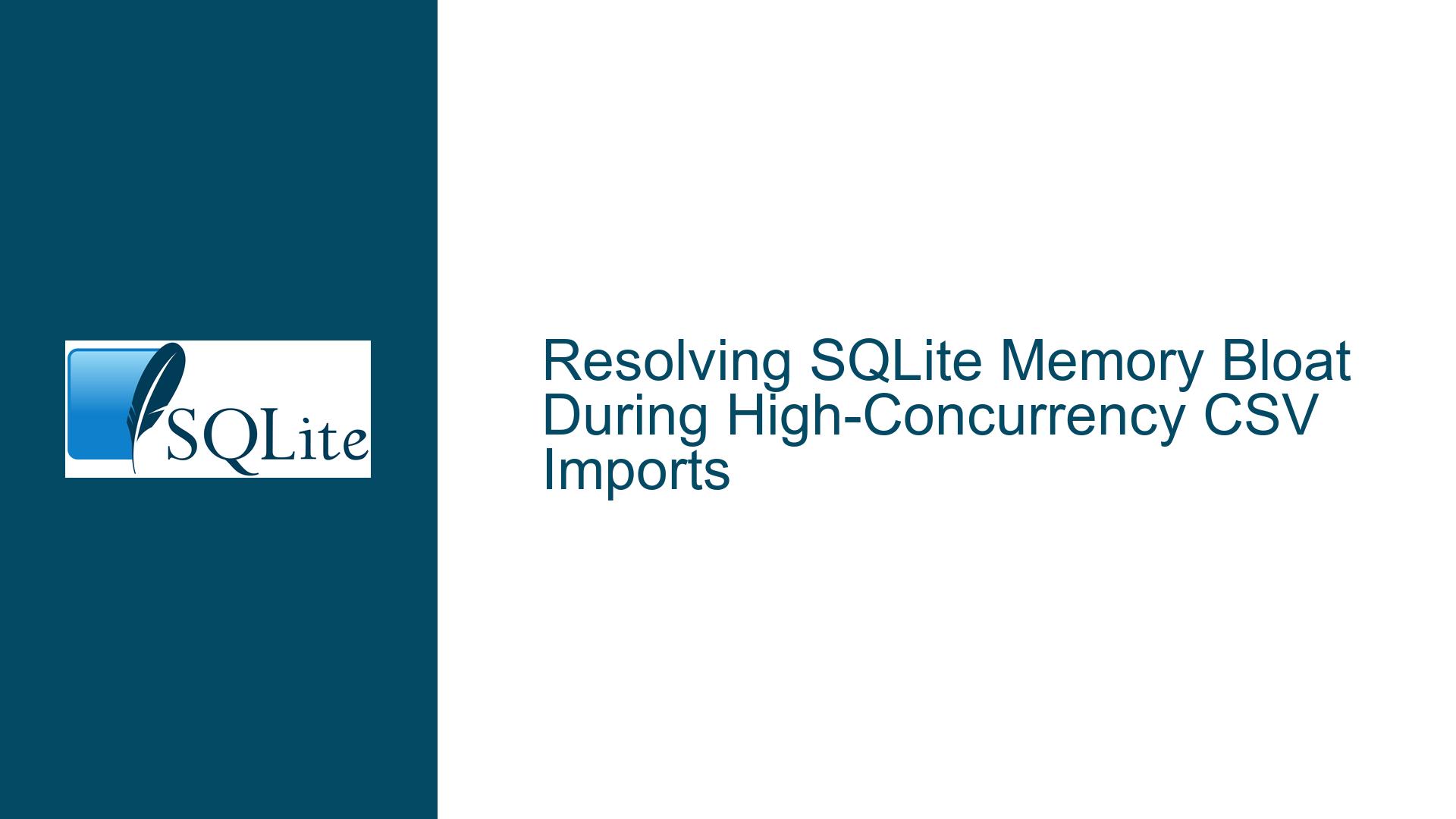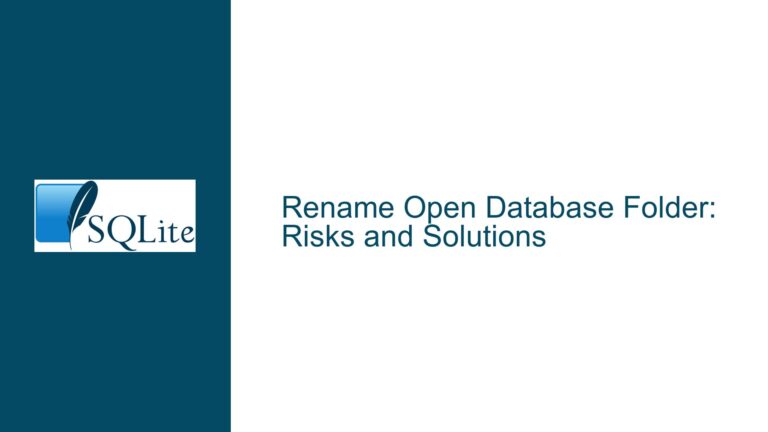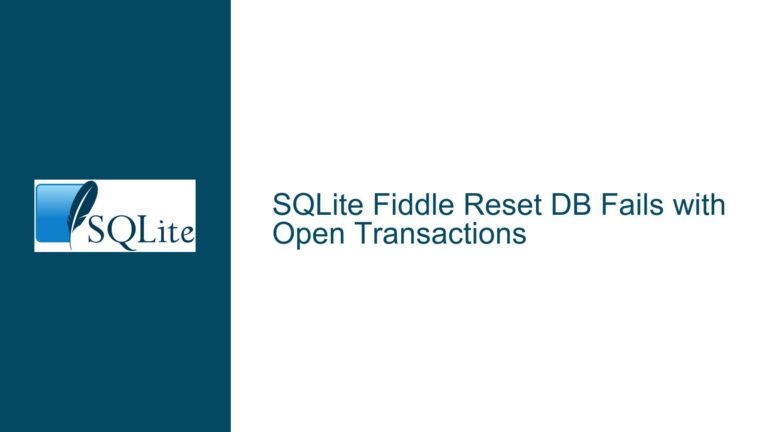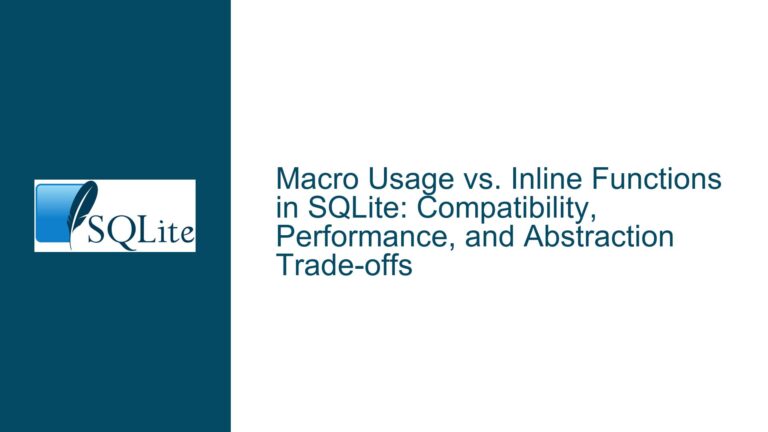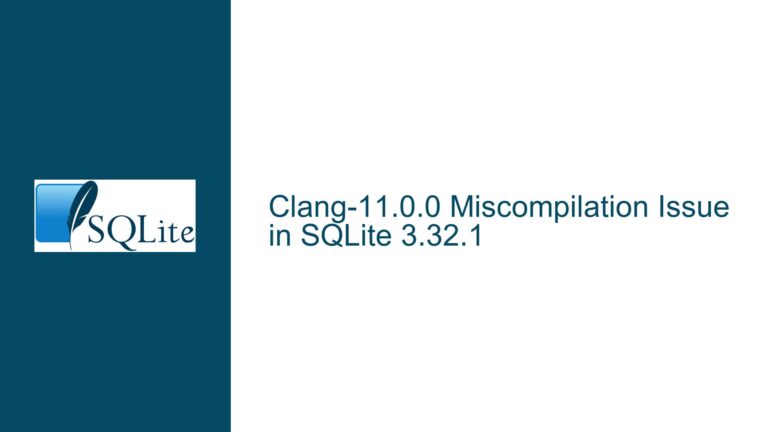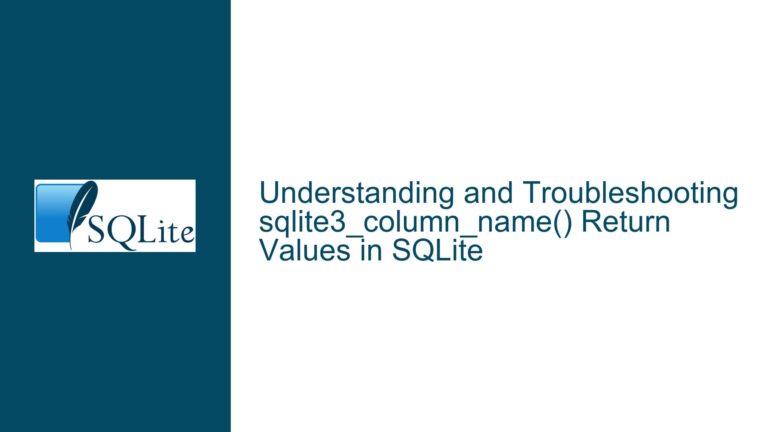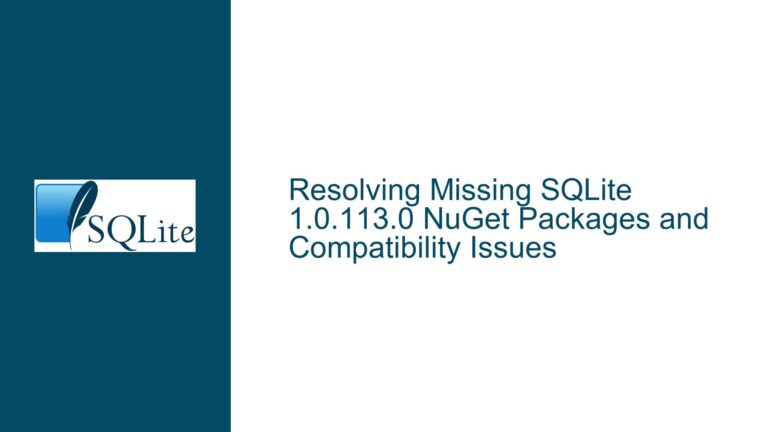Resolving SQLite Memory Bloat During High-Concurrency CSV Imports
Understanding Memory Exhaustion and Premature Termination in SQLite CSV Imports
Architectural Context: Concurrent CSV Imports with Custom Code
The core challenge involves a high-concurrency data import system where 30 parallel instances of a Clarion-based application insert millions of records from CSV files into separate SQLite databases. Key symptoms include:
- Complete consumption of 64 GB system RAM during operation
- Process termination at 40%-65% completion (vs successful completion with Btrieve/Pervasive)
- Failed mitigation attempts through database closure every 20,000 records
This scenario combines SQLite’s transactional model with unconventional stress factors: dozens of concurrent write-heavy processes, custom database wrapper code, and legacy system integration. The self-termination behavior suggests either uncontrolled memory growth triggering OS-level process killing or internal SQLite error handling not properly surfaced through the Clarion abstraction layer.
Root Causes of Memory Saturation and Process Instability
Four primary factors contribute to the memory exhaustion:
Transaction Scope Mismanagement
- Default autocommit mode forcing per-INSERT transaction boundaries
- Unreleased journal files consuming virtual memory space
- Rollback journal/WAL accumulation across parallel processes
Connection/Object Proliferation
- Unbounded growth of prepared statement objects
- Connection pool saturation with 30 active write handles
- Cached page retention across multiple open databases
Suboptimal Pragma Configuration
- Overly aggressive cache_size allocations per database
- Disabled memory management (SQLITE_DEFAULT_MEMSTATUS=0)
- Missing memory release triggers via sqlite3_db_release_memory()
I/O Subsystem Contention
- Page cache duplication across concurrent writers
- Filesystem-level locking bottlenecks
- Write amplification from scattered small transactions
The Clarion abstraction layer introduces additional uncertainty through potential driver-specific behaviors like statement caching strategies and transaction boundary handling that may differ from SQLite’s default CLI implementation.
Comprehensive Optimization Strategy for High-Concurrency Workloads
Phase 1: Transaction Batching and Scope Control
- Implement explicit transaction blocks around record groups:
BEGIN IMMEDIATE; INSERT ...; -- Repeated 20,000 times COMMIT; - Set synchronous=NORMAL for group commits (trade durability for speed)
- Configure journal_mode=TRUNCATE to minimize journal file growth
- Utilize PRAGMA locking_mode=EXCLUSIVE for write-heavy sessions
Phase 2: Memory-Aware Connection Management
- Apply strict prepared statement recycling:
sqlite3_stmt *stmt; sqlite3_prepare_v2(db, "INSERT ...", -1, &stmt, NULL); for(i=0; i<20000; i++){ sqlite3_bind_xxx(stmt, ...); sqlite3_step(stmt); sqlite3_reset(stmt); } sqlite3_finalize(stmt); - Enforce connection quotas using a semaphore system
- Implement proactive memory release:
if(sqlite3_db_release_memory(db) < SQLITE_OK){ sqlite3_close_v2(db); // Force connection reset reopen_database_connection(); }
Phase 3: Pragma Optimization Profile
- Set global memory caps:
PRAGMA hard_heap_limit=2147483648; -- 2GB per process PRAGMA soft_heap_limit=1073741824; -- 1GB warning threshold - Configure database-specific parameters:
PRAGMA page_size=8192; -- Match OS page size PRAGMA cache_size=-2000; -- 2000 pages * 8KB = 16MB cache PRAGMA mmap_size=268435456; -- 256MB memory-mapped I/O
Phase 4: I/O Subsystem Tuning
- Implement staggered write scheduling across processes
- Separate database files onto distinct physical drives
- Mount filesystems with nobarrier and noatime options
- Preallocate database files using zerofill:
dd if=/dev/zero of=database.db bs=1M count=10000
Phase 5: Monitoring and Adaptive Control
- Install memory usage hooks:
sqlite3_memory_used(); // Track per-connection allocation - Implement circuit breakers for memory overconsumption
- Develop write pacing using leaky bucket algorithms
Phase 6: Clarion-Specific Mitigations
- Verify driver implements sqlite3_interrupt() properly
- Disable any driver-level query caching
- Enforce strict connection timeout policies
- Audit Clarion’s SQLite wrapper for hidden prepared statements
Final Validation Steps
- Single-process CLI import test with .import command
- Progressive scaling from 5 to 30 instances with memory profiling
- Comparative analysis of WAL vs rollback journal modes
- Long-duration stress test with memory leak detection tools
This comprehensive approach addresses both SQLite’s intrinsic memory management behaviors and the unique challenges posed by high-concurrency legacy system integration. By combining transactional discipline, memory quotas, and I/O optimizations, sustained throughput can be achieved within available system resources.
